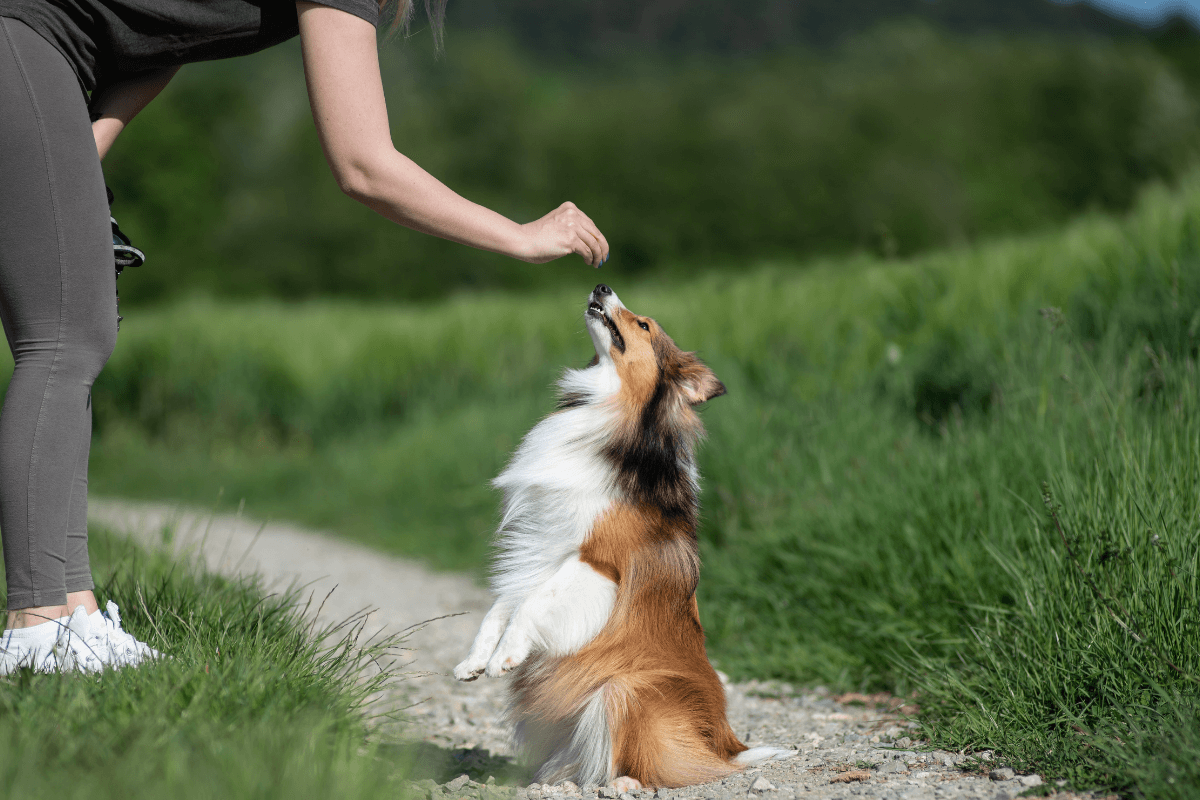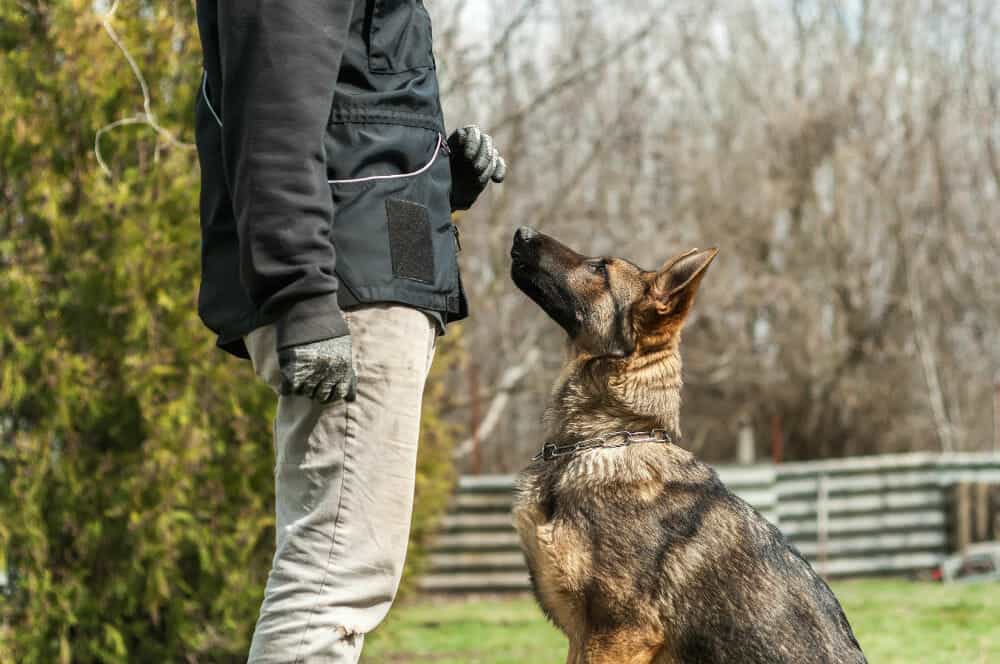Important Tips for Successful Dog Training: A Guide for Pet Dog Owners
Effective dog training is a complex procedure that requires a critical method customized to both the pet's temperament and the owner's purposes. Understanding how to navigate these barriers can significantly improve the training experience, inevitably transforming the relationship in between proprietor and pet dog.
Comprehending Canine Behavior
Understanding canine behavior is essential for effective training and cultivating an unified partnership in between dogs and their proprietors. Dogs communicate primarily via body language, vocalizations, and activities, making it critical for proprietors to analyze these signals properly. Identifying a canine's position, tail setting, and ear orientation can offer understandings into its emotional state. A wagging tail does not constantly show joy; it can likewise signify exhilaration or stress and anxiety.

Socialization plays a substantial role in pet habits; direct exposure to various atmospheres, individuals, and other pets can dramatically impact a dog's personality. Variables such as type characteristics and individual character must lead training methods, as some types may have certain behavior attributes that demand tailored approaches. By recognizing these elements, owners can develop a helpful environment that motivates positive habits, bring about successful training end results and a much deeper bond with their pet dogs.
Developing Consistent Commands
Efficient communication with your pet begins with establishing regular commands. This fundamental element of training is essential for cultivating understanding in between you and your family pet. Uniformity in the commands you use makes sure that your pet dog can reliably connect details words or phrases with the wanted habits.
When selecting commands, select clear, distinctive words that are easy to set apart and claim from one another. Stay clear of using similar-sounding commands that may perplex your pet dog. As an example, making use of "sit" and "remain" is suitable, yet "sit" and "hit" can bring about misunderstandings.
Additionally, maintain the exact same tone and volume for each and every command. Canines are delicate to singing hints, so differing your tone can create confusion.
It is equally important to make sure that all household members are on the very same web page concerning the commands made use of. A united front in command usage will certainly avoid combined signals and enhance the understanding procedure.
Favorable Support Strategies
The power of positive reinforcement in pet dog training exists in its ability to urge wanted behaviors via incentives and appreciation. This strategy is grounded in the concept that behaviors followed by beneficial results are more probable to be duplicated. By integrating positive support right into your training routine, you can properly form your pet dog's behavior in a useful way.
To execute positive support, it's vital to determine what encourages your pet dog, whether it be deals with, toys, or verbal appreciation. When your pet dog performs a wanted action, such as resting on command, quickly reward them with a treat or love. This organization between the command and the favorable end result strengthens their understanding.
It's essential to timing the incentives appropriately; providing the support within seconds of the desired habits helps your pet make the link (dog training). Furthermore, uniformity is essential-- make certain that all family members use the exact same commands and reward systems to stay clear of complication

Gradually, you can decrease the frequency of deals with as your dog learns the actions, transitioning to praise or intermittent incentives. This approach not just promotes a strong bond between you and your dog however also promotes a positive knowing environment, making educating a satisfying experience for both.
Socialization and Interaction
Regularly revealing your canine to a selection of environments, people, and other pets is essential for their social development. Socialization must begin early, preferably during the crucial home window of 3 to 14 weeks, when young puppies are most responsive to brand-new experiences. Nonetheless, older canines can likewise take advantage of ongoing socializing initiatives.
Present your canine to different setups, such as parks, pet-friendly shops, and city areas. This exposure assists them adjust to different stimuli, minimizing anxiety and fear reactions. Encourage this website positive communications with various other pets and people, ensuring that these encounters are regulated and risk-free to promote confidence.
Utilize organized playdates with well-mannered dogs, as this can boost your canine's social skills and educate them appropriate habits. Obedience courses and training sessions likewise offer exceptional opportunities for socialization, allowing your dog to interact with others in a supervised atmosphere.
Screen your dog's body language throughout communications, as this will certainly help you assess their convenience level. Gradually boost direct exposure to more difficult scenarios while making certain that each experience is favorable. A well-socialized pet is most likely to show well balanced behavior, making them a joy to have in any type of setting.
Resolving Common Training Challenges
Every dog proprietor will experience training obstacles eventually, no matter their pet dog's age or socialization degree. Identifying common issues such as stubbornness, diversions, and terror can help in developing reliable strategies for improvement.

Progressively introduce distractions as the pet dog comes to be much more skilled in commands. Short, constant training sessions are also efficient in keeping attention.
Fearfulness can impede a canine's knowing procedure. Steady desensitization to the resource of anxiety, paired with favorable reinforcement, can assist reduce anxiousness. Persistence is crucial; never require a pet dog right into a situation that causes distress, as this might exacerbate the problem.
Inevitably, understanding and dealing with these usual obstacles with an organized method will foster an extra efficient training experience, strengthening the bond between pet dog and proprietor while advertising efficient knowing.
Final Thought
In recap, successful pet training relies on a detailed understanding of this link canine behavior, the establishment of consistent commands, and the application of positive support methods. Socializing plays an essential duty in creating well-adjusted pet dogs, while resolving typical training difficulties requires perseverance and adaptability. By carrying out these vital techniques, pet proprietors can cultivate a strong bond with their canines check my reference and advertise preferable actions, eventually resulting in a harmonious partnership in between humans and their canine buddies.
Recognizing pet dog actions is necessary for reliable training and cultivating an unified partnership in between canines and their proprietors.Socialization plays a considerable function in dog habits; direct exposure to numerous environments, people, and other pets can dramatically influence a pet's personality.The power of favorable reinforcement in pet training lies in its capacity to encourage wanted actions through benefits and appreciation. By including favorable support into your training regimen, you can successfully shape your pet's actions in a constructive fashion.
In summary, effective pet training depends on an extensive understanding of canine habits, the facility of regular commands, and the application of favorable reinforcement techniques.